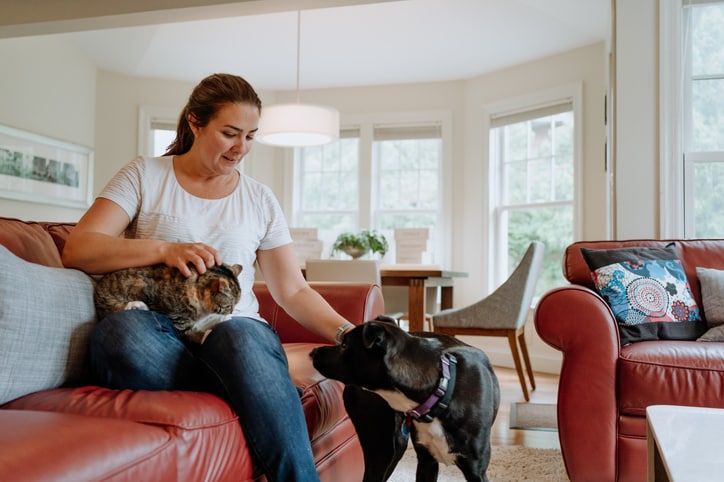It isn’t always easy to tell when you have a sick dog on your hands. Dogs evolved from pack living, where the members of the pack who showed weakness were considered vulnerable. Therefore, dogs tend to hide any overt signs that they are sick. “While humans may moan about how miserable they are to get attention, dogs try to avoid calling attention to themselves,” says veterinarian Dr. Coleen Johnston.
“A sick dog tends to become more subdued and quiet, and until they are too sick to hide it, will not show any overt signs of not feeling well.” So how do you know when your dog needs a sick day?
Here are 11 warning signs that it’s time to call the vet:
1. Changes in eating patterns
A sudden change in how much a dog eats — eating less, or even how enthusiastically a dog eats — is one of the earliest signs something isn’t right. Similarly, look for any sudden weight loss or weight gain.
2. Changes in drinking
Any change in how much a dog drinks can indicate a problem. Especially look for increased thirst. Many diseases (including kidney disease, urinary tract infections and diabetes) start with an increase in thirst.
3. Changes in behavior
If your dog seems grumpier or suddenly begins to snap and growl, it may mean she isn’t feeling well. “This is often a subtle change, or it may develop gradually,” says veterinarian Dr. Kati Loeffler. Other signs a dog may be ill include behavior changes such as in how your pooch greets people or her posture when she interacts with people.
4. Changes in elimination habits
If your dog needs to be taken out more frequently, it’s a sign that something isn’t quite right. In addition, how your dog eliminates is noteworthy. “For example, a dog that normally squats and empties the bladder suddenly squats multiple times with only small amounts of urine each time,” says Johnston.
5. Changes in sleep
If your pooch seems restless and isn’t sleeping well or suddenly sleeps much more, it could be a sign that something’s wrong. “These are more subtle issues that may develop over time and that may be confused with aging,” says Loeffler, so don’t simply chalk up these kinds of disturbances up to old age.
6. Cough
An overt sign of illness like a cough is easy to spot. Pay attention to the cough. Is it wet or dry sounding? Does it happen when your dog is lying down or exercising? These kinds of questions can help your vet make the diagnosis.
7. Nasal or eye discharge
Clear discharge can be quite common and isn’t a sign for worry. However, Loeffler notes, “red or goopy eyes should be examined right away.” The same goes for yellow or green discharge.
8. Diarrhea
If your healthy dog has mild diarrhea, you can watch him or arrange for a dog sitter to watch him at home for 24 hours — as long as you ensure he’s getting plenty of fluids. However, if your dog also has vomiting, loss of appetite, abdominal pain or bloating, call the vet, Johnston urges.
9. Vomiting
Likewise, if your dog vomits once and is otherwise acting normal and has a normal appetite, then just keep a close eye on her. “However, if she doesn’t want to eat, has stomach pain, a fever or other clinical signs, get her in right away,” Johnston says.
10. Fever
A dog’s normal temperature is 99 to 102.5 degrees Fahrenheit. Anything over 102.5 requires a vet visit. If you think your pup is hotter than usual, use a rectal thermometer that is specifically designed for use on dogs. But then again, if your dog has signs of fever — lethargy, vomiting, a cough — you should call the vet anyway.
11. Pain
Dogs rarely vocalize their pain. Instead, look out for restlessness, pacing, limping and contorting into odd positions. These are most often the best indicators that your dog is hurting.
Go with your instinct if you suspect you have a sick dog. “If something is off, better a trip to the vet to find out nothing was wrong than to find out days later you could have fixed the problem,” says Johnston.
And read about Preparing for a Pet Care Emergency.

